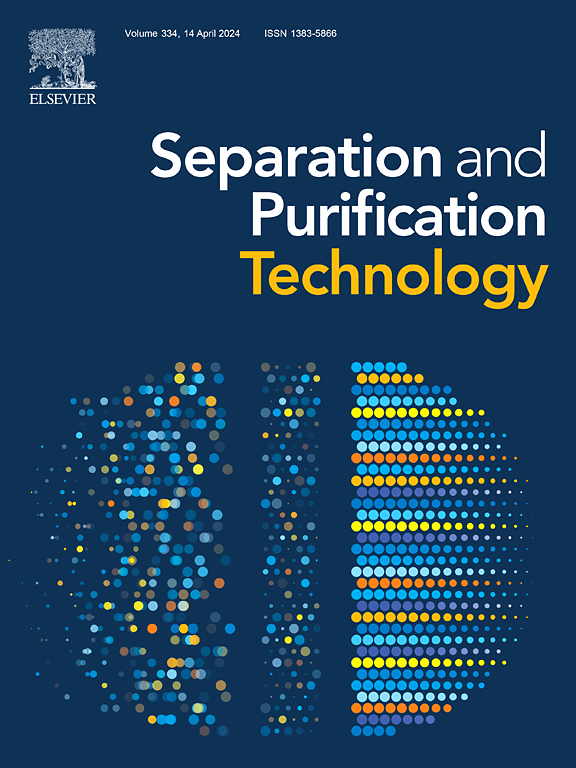新型电化学陶瓷氧泵的解耦分析
IF 8.1
1区 工程技术
Q1 ENGINEERING, CHEMICAL
引用次数: 0
摘要
陶瓷氧泵(cop)通过在透氧膜反应器内集成电化学反应和分离,在连续高纯度氧气生产中显示出显著的优势。然而,在低于750 °C的温度下,由于缺乏高活性电极,它们的工业应用仍然受到限制。在这项研究中,我们开发了一种三电极结构来解耦电极,以分析不同大气条件下cop的性能演变。通过对不同电极进行严格的原位解耦测试,对阻抗数据进行综合分析,发现纯氧中析氧反应(OER)过程的电阻主要归因于电极的离子扩散过程。同时,空气侧氧还原反应(ORR)的阻力归因于表面气体吸收和大块离子输运过程。此外,采用优选阴极Ba0.5Sr0.5Co0.8Fe0.2O3-δ和阳极SrCo0.8Nb0.1Ta0.1O3-δ构建了电解质(200 μm)负载的COPs。该COP在750 °C下实现了1956 mA cm - 2@0.6 V的高电流密度,并在144 h内保持了出色的工作稳定性。本文章由计算机程序翻译,如有差异,请以英文原文为准。
Decoupling analysis for advanced electrochemical ceramic oxygen pumps
Ceramic oxygen pumps (COPs) have demonstrated significant advantages in continuous high-purity oxygen production by integrating electrochemical reactions and separation within oxygen-permeable membrane reactors. However, their industrial application remains constrained by the lack of highly active electrodes at temperatures below 750 °C. In this study, we developed a three-electrode structure to decouple the electrodes for analyzing the performance evolution of the COPs under different atmospheric conditions. Through rigorous in situ decoupling tests of diverse electrodes, a comprehensive analysis of impedance data revealed that the resistance of the oxygen evolution reaction (OER) process in pure oxygen is predominantly attributed to the ion diffusion process of the electrode. Meanwhile, the resistance of the oxygen reduction reaction (ORR) on the air side is attributable to both the surface gas absorption and bulk ion transport processes. Furthermore, an electrolyte (200 μm) supported COPs was constructed using the preferred cathode Ba0.5Sr0.5Co0.8Fe0.2O3-δ and anode SrCo0.8Nb0.1Ta0.1O3-δ. This COP achieves a high current density of 1956 mA cm−2@0.6 V at 750 °C and maintained excellent operating stability over 144 h.
求助全文
通过发布文献求助,成功后即可免费获取论文全文。
去求助
来源期刊

Separation and Purification Technology
工程技术-工程:化工
CiteScore
14.00
自引率
12.80%
发文量
2347
审稿时长
43 days
期刊介绍:
Separation and Purification Technology is a premier journal committed to sharing innovative methods for separation and purification in chemical and environmental engineering, encompassing both homogeneous solutions and heterogeneous mixtures. Our scope includes the separation and/or purification of liquids, vapors, and gases, as well as carbon capture and separation techniques. However, it's important to note that methods solely intended for analytical purposes are not within the scope of the journal. Additionally, disciplines such as soil science, polymer science, and metallurgy fall outside the purview of Separation and Purification Technology. Join us in advancing the field of separation and purification methods for sustainable solutions in chemical and environmental engineering.
 求助内容:
求助内容: 应助结果提醒方式:
应助结果提醒方式:


